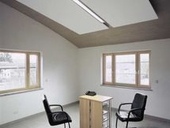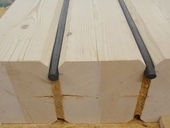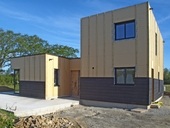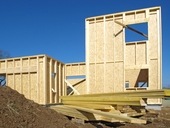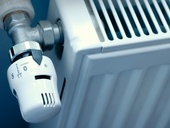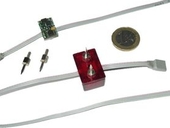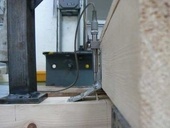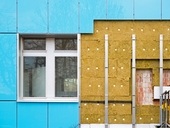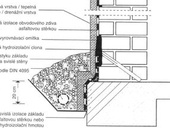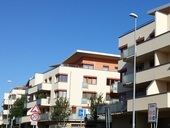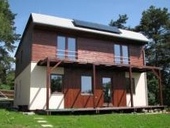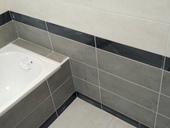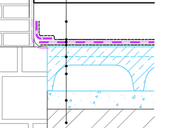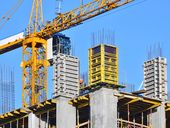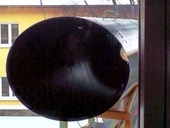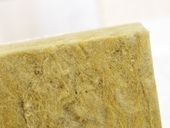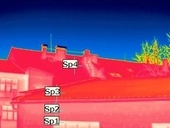Acoustic design brings a new perspective to acoustics. Acoustic design tries to solve our uncomfortable noise conditions at any stage of the building. The easiest way is to solve at design and implementation stage. Situation at the stage of final inspection (stage to prepare to use) is more difficult. The most difficult path to the real solution is in using phase. Acoustic design focuses on the layout of dwellings to each other, the position of rooms within a house or apartments. Acoustic design solves issues of additional installations of suspended ceilings, primary plus secondary (added) walls and other acoustic absorbing elements that reduce reverberation time. Acoustic design also deals with a newly and additionally installed technologies such as modern air-condition units, new lifts, special heat pumps etc. The main point is to get the right balance between acoustic comfort of living and system of building construction using new technologies.
Archiv článků od 5.1.2015 do 30.3.2015
This contribution deal with the testing of thermal resistance and derived thermal transmittance of timbered wall from spruce wood beams 300 mm thick according to the standard EN ISO 8990 by Hot Guarded Box method. Thermal conductivity tests of individual layers made from the tested wall were carried out according to the standard ISO 8302 by Guarded Hot Plate method after the test according to the standard EN ISO 8990. These thermal conductivity tests were carried out for the average thermal resistance determination of the wall from the equivalent thermal conductivity and also for the comparison with the value founded by Hot Guarded Box method. The part of the tests was also the determination of mass moisture of individual layers and then the equivalent mass moisture of the wall. The contribution contains the maximal requirement values of thermal transmittance of the exterior walls according to the national standard ČSN 73 0540-2. The contribution contains also informative table of thermal conductivities of the plates of different wood profiles founded by tests or from literature.
The paper summarizes important information related to the field of design of wooden buildings from the point of view of the sound reduction index. The text is focused on wooden structures (both massive wood systems and wood frame systems) as well as on particularities of an acoustic behaviour of wooden floor structures with fillings. General principles are described which may serve as useful hints for architects and project engineers when designing structures with wooden elements. Emphasis is primarily put on the specific acoustic behaviour of wooden buildings in comparison with masonry and concrete structures.
The main purpose of this paper is to show how the different structural details affect the airborne sound insulation of lightweight building elements. The sound reduction index of such structures depends on several phenomena like the cavity attenuation, the mass-air-mass resonance, standing waves resonance, sound transmission via sound bridges etc. This paper describes their effect on sound insulation and gives the initiative information for optimized acoustic design.
The article describes sensor system for increased moisture detection in construction materials, especially in the wood. The assumption is that a sensor network is built-in into the construction elements of the building and it is connected to a central unit. The goal is to develop a sensor suitable for permanent installation in the construction during realization of the building. The sensor network enables early warning and fast detection of increasing moisture in the building and alert building owner or operator. The sensors will be placed at critical building’s locations with high risk of plumbing accidents. Using the installed sensor system it is possible approximately locate the place of failure, shorten detection time and substantially reduce damage and reconstruction costs.
There is a significant possibility of improving the load bearing capacities calculated according to the existing Standards of spatial connections with thin walled metal nailing plates. The reason is that the design of these connecting elements has inadequate support in the existing Standards and Technical Reports. The improvement can make them more consistent with the results from tests. Therefore, research has been called to improve this state of the art. The paper presents the whole experimental study of angle brackets which consists of full-scale experiments, numerical models of the connections, current analytical calculation approaches and proposals how to improve them.
This article is focused on design optimization in naturally ventilated facades. Ventilated facade constructions are designed according to ETAG 034. Thickness of the cavity is defined at least 20 mm. This distance can be reduced locally to 5 mm to 10 mm. In this case, it has to be verified that it does not affect the ventilated function. The minimum cross-sections of ventilation openings at the inlet and at the outlet are also determined at least 50 cm2 per linear meter. The influences of local reductions at inlet and outlet openings are analyzed. Air temperatures and velocities are monitored in the cavity with thickness 20, 40 and 60 mm. Results show that the influence of local reduction increases with increasing cavity thickness.
A test of frost resistance of a building material belongs to standard methods of an evaluation of its durability, it expresses a resistance of a building material to a substantial change of temperature and an influence of atmospheric effects regarding to its functionality and utilization in a long-term horizon. The test of frost resistance is time demanding as well as it lays demands on a test equipment of a testing laboratory. This paper describes results of a project, which evaluated a possibility of using a quick indicative test enabling a quick evaluation of a tested concrete regarding its frost resistance. The used indicative test is derived from the standard ČSN 73 73 25 Determination of frost resistance by shorten tests, which has been cancelled without refundation. This method could be beneficial for a quick evaluation of a new designed concrete mixture non-proven in a laboratory. This paper was elaborated with the institutional support for long-term development of research organizations by the Ministry of Industry and Trade of the Czech Republic.
This paper deals with additional moisture protection of the building structures on the contact with the ground. The presented remedial work is based on the WTA guidelines, which recommend the optimal material and technology. Low and high pressure injections are mentioned, as well as additional horizontal waterproofing. It is underlined that important role plays the suitable materials and compliance with the prescribed technology. We cannot forget on effect of splash water and effect of condensing moisture. The success of remediation is conditioned on the highly professional realization of details. Specific solutions are illustrated in the appended figures.
In the last article on the regeneration of residential buildings, I said that additional contributions will be more focused on topics that are crucial for the effective functioning of the heating system, or which are controversial perception among the general public. The first topic that fully meets the two criteria is the heat transfer between the different flats in apartment houses.
The article deals with the issue of economic accessibility of energy-saving buildings; respecting the possibility of financial support from the National programme “Nová zelená úsporám” (New green savings programme, abbr. NZÚ). The purpose of the article is to disprove some of the incorrect interpretations and myths connected with this topic. It point out the good practice examples of a high-quality projects preparation, their successful submission into “New green savings programme” and following realization. Article aims either at lay or professional reader.
Czech version of the renowned handbook TCNA contains guidelines for the design and execution of tiles made of ceramic, glass and stone. Contains a description of 155 standardized methods, guidelines for designing Movement Joint of Floors, Environmetal Classification. LEED and other information necessary for the proper design and execution of tiles. Guide creates a quality system. It was registered with the Chamber of Commerce as rules of practice. The manual is intended for designers, architects, craftsmen, construction management, investors, students, etc.
Many various physical, mechanical and deformation properties have to be designed, tested and observed during life of concrete because of possible failures in given service load and climatic conditions. Apart from basic strength characteristics, it is necessary to keep in view water tightness, capillarity, water absorbing capacity, frost resistance, volumetric changes or thermal expansion. Preventing of these failures during the whole life of concrete structures in various exposure classes is the basic condition of achieving required long-term durability. The text below describes several important properties of concrete connected with flaws and failures.
The crucial mechanical properties of concrete are compressive strength, splitting tensile strength, tensile strength, tensile bending strength and shear strength. Deformation properties are connected with volumetric changes and action of external and internal strength; the characteristic mechanical property is defined by static or dynamic elasticity modulus. As regards durability of concrete, the concept is relative and limited depending on the time of action of physical and chemical influences. Corrosion of concrete is the process leading to disintegration of the material by means of chemical processes or physical influences. Durability also includes fire resistance, frost resistance and abrasive quality of concrete.
If you ask hygienist, how to define the term " indoor environment quality", the aswer will be: A set of physical, chemical and biological environmental factors. All of these factors should have - if possible, and the current state of knowledge it allows - hygienic limits as insurmountable values, protecting human health.
The exact determination of emissivity and the following determination of surface temperature of glossy materials can be carried out e. g. after applying a material with a known value of emissivity on the surface (e. g. self-adhesive foil or spray tint). The contribution deals with other possibility of determination of surface temperature and the influence of emissivity of glossy materials using a metal shield that reduces the negative influence of the reflected radiation during the termographical measurement.
The article deals with the determination of thermal conductivity mineral insulation. Mineral Insulation Manufacturers Association conducted a survey on this topic between building designers and describes the various possibilities of calculation and determination of these values and the differences between them.
The practical determination of surface temperature and emissivity of glossy materials using the infrared thermography is carried nowadays in the way that the surface is covered with a material which has a known value of emissivity. The mentioned values are, however, possible to be determined even without the materials which havae a known value of emissivity: using the infrared radiation, which is reflected by the glossy surface and is detected by the termographical device afterwards. The contribution deals with the possibility of determination of surface temperature and emissivity of glossy materials by the mentioned method.
A sophisticated system of ventilation and cooling (air conditioning) in representative rooms of the valuable historical building of the Olomouc town hall is described in the paper (see pic. 1).
After a complex and detailed technical and historical survey it was decided to use the original chimneys and their flues, at present out of operation (see pic. 5) for bringing the air into the rooms. The flues were milled and steel liners were inserted, in order to bring the air into the conditioned rooms. Thanks to this solution – responsive and witty in the same time – the vaults and murals in the ceremonial hall and adjacent service rooms remained intact.
Within the rooms the air is distributed through very flat pipes laid into the cinder embankment under the wooden parquetry that had to be repaired, too. In the same time new cables for sound and security systems, until now missing, were installed under the floor. The air is brought into the rooms through the slot diffusers, integrated into the carpets. The cooling units were installed under the renovated window sills.
Similar system was implemented in the mayor´s office, his or her secretariat and a great reunion hall.
zpět na aktuální články
